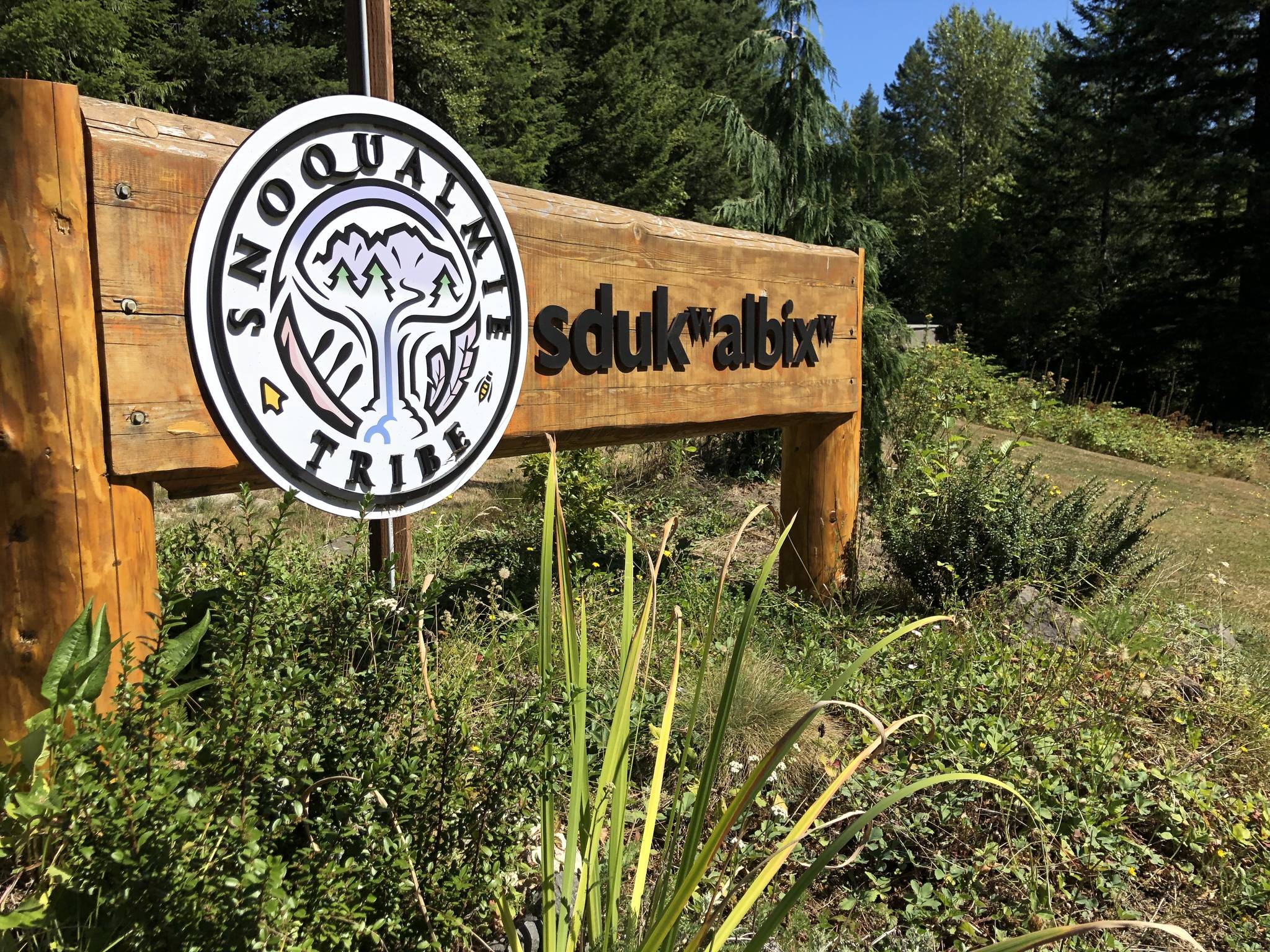The Snoqualmie Tribe has released an interactive story map exploring their restoration practices and projects.
The Snoqualmie People (sdukʷalbixʷ) have lived in the southern Salish Sea from time immemorial. The interactive story map fills readers in on the Snoqualmie People’s history. For the complete story, head to the Snoqualmie Tribe’s webpage. The following is only intended as a brief overview.
The Snoqualmie People signed the Treaty of Point Elliott in 1855, along with many other signatories. It ceded tribal lands with the promise of reservation land and guaranteed rights, including hunting and fishing. At the time, the Snoqualmie was one of the largest tribes in the region, with around 4,000 people. The treaty recognized the Snoqualmie Tribe’s sovereignty, but has never been fully upheld by the U.S. government.
In the late 1930s, the Snoqualmie Tribe tried to secure a reservation of more than 10,000 acres along the Tolt River, and a second parcel north of the Suquamish reservation in Kitsap County. But after World War II, the U.S. government abandoned working towards these plans. Instead, the federal Indian Termination Policy was adopted to try and eradicate tribes. The Snoqualmie Indian Tribe lost its federal recognition in 1953, and later was excluded from the Boldt Decision in 1974.
It spent decades pushing to regain federal recognition, which it finally did in 1997, finalized two years later. This allowed the Snoqualmie Tribe to purchase a 69-acre property along SE North Bend Way in Snoqualmie where it established the Snoqualmie Casino, and the Crescent Market and gas station.
These moves made the Snoqualmie Tribe one of the largest employers in the Valley, and it has provided more than $10 million in support to local non-profits throughout Washington state.
In 2007, the Snoqualmie Tribe created the ENR Department to promote land stewardship. The Restoration program focuses on ecological restoration, focusing on restoring connection between people and places for future generations. Much of the landscape today has been changed and degraded due to land use practices over the last 150 years. The Snoqualmie Tribe hopes to help the land recover to restore ecosystem services to the whole community. This includes providing habitat for wildlife, cooling and purifying the water, providing fresh air and sequestering carbon to help slow and mitigate climate change.
The Snoqualmie Tribe is also active in restoring the Lake Sammamish kokanee. The eastern shore of the lake was historically a Snoqualmie village area, and later a tribal member-owned homestead. The Zackuse Creek flows through private, county and city-owned property, and the Snoqualmie Tribe is working with other organizations to help restore habitat.
The Snoqualmie Tribe is also helping to vaccinate not only members but the community as a whole. On its website, the Tribe also outlined several ways that people can support them. They include the following:
1. Educate yourself about the first people of the lands on which you reside, work, and recreate, the Snoqualmie Indian Tribe.
Visit www.snoqualmietribe.us or “like” us at https://www.facebook.com/snoqualmieindiantribe
2. Acknowledge the first language of this land, Lushootseed.
To hear Lushootseed, and learn a few words, visit the Snoqualmie Tribe’s language page at https://culture.snoqualmietribeweb.us/language/
3. Understand Snoqualmie is a Federally Recognized Tribe and a sovereign government with constitution and elected leaders.
To learn more about the Snoqualmie Tribe’s fight for re-recognition, visit https://snoqualmierightsday.snoqualmietribeweb.us/
4. Ensure that Tribal voices and perspectives are included and respected by following the principles of Free, Prior and Informed Consent (FPIC).
To learn more about FPIC, visit https://un-declaration.narf.org/implement-us/fpic/
5. Don’t commit cultural appropriation, and do not support businesses that profit from cultural appropriation.
6. Support Snoqualmie Tribal enterprises, as their revenues are invested in Tribal values and the Snoqualmie community.
Learn more about the Snoqualmie Tribe’s enterprises:
Snoqualmie Casino
Salish Lodge
Crescent Market
Eighth Generation
7. Be mindful and present by considering how your actions and decisions impact Snoqualmie lands. Go beyond reciting a land acknowledgement to practicing land acknowledgement.
Learn about land acknowledgments here: https://nativegov.org/a-guide-to-indigenous-land-acknowledgment/
8. Stand with the Snoqualmie Tribe in caring for our lands. Snoqualmie ancestral lands have been altered dramatically, and replanting native plants is one way you can help restore our damaged ecosystems and return native presence.
9. Recognize and respect the Snoqualmie Tribe’s work to protect our sacred places.
10. Stand with the Snoqualmie Tribe in advocating for restoration of a free natural flowing Snoqualmie Falls. Challenge or reject the concept of hydropower being “clean” or “renewable” and learn more about how the PSE hydropower facility at the Falls has desecrated our most Sacred Site.


